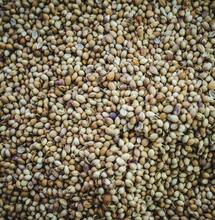How's the Australian medical market developing?

Australia legalised medical cannabis back in 2017, and medical pot products are becoming increasingly popular for the treatment of various ailments. With roughly 90,000 new patients with access to cannabis medicines this year alone, and revenue from product sales forecast at $230 million at year-end, the Aussies medical cannabis market is exceeding growth expectations. Cannabis is available as prescription medicine in the Land Down Under, but there are concerns that the price per product is high, and those who need cannabis medicines the most may lack the financial means to cover the costs.
Hundreds of thousands of Australians have turned to medicinal pot to treat medical conditions where traditional treatments flop.
According to the Therapeutic Goods Administration (TGA), the Australian Government's medicine and therapeutic regulatory agency, over 172,000 Australians can access medicines upon prescription via the agency's special access scheme.
Over the past five years, the number of patients has been steadily growing. This year, the scheme had over 86,000 applications, and over 100,000 more medical patients are anticipated to apply in 2022.
Pain, anxiety, mood disorders, and cancer-related symptoms are some of the most common health reasons why Australians opt for medical cannabis.
The TGA has so far approved and certified only two products on the Australian Register of Therapeutic Goods: Epidyolex, which is prescribed for severe forms of epilepsy occurring in children, and Sativex, which is dispensed for muscle spasticity due to multiple sclerosis.
However, through the TGA scheme, doctors can additionally request access to 224 other medical cannabis products, which can be in the form of pills, capsules, oils, tinctures, sprays, etc. The products include both plant-derived and synthetic drugs.
The growing demand for cannabis drugs is also pushing forward and promoting research on cannabinoids and their full effects on health and wellbeing. CBD for instance is in the focus of almost 20 different trials in Australia, including research on safety and tolerability levels, and conditions like insomnia, anorexia, Tourette's syndrome, and more.
The ongoing studies should help GPs decide on better products and dosages for their patients, and hopefully expand the list of certified all-clear medicines in the country.
Companies that want to register their medical products must disclose proof for clinical benefits. The policy goes in favour of potent drugs like Sativex and Epidyolyex that contain higher cannabinoid levels. It's more challenging to prove the effectiveness of low-dose CBD products, which Aussies can actually access over-the-counter without prescription as of February this year (TGA has approved up to 150mg/day maximum for use in adults).
Anecdotal evidence suggests that CBD works better when doses are increased, especially for more serious medical conditions. Doctors commonly advise patients to increase intake gradually until a satisfying dose is found.
While scientists still have to muster more conclusions on the effectiveness of various cannabis-derived drugs and the government to upgrade its regulations, the plant-based medicines remain out of reach for many Australians due to high prices.
Cannabis oils, which is the most commonly dispensed product, cost $0.14 a milligram on average, Which means a patient may need to pay over $400 per month for something like 100mg a day.
It's estimated that over half a million Australians who cannot afford such a price, go and pick products from the illicit market. Even though products might be plagued with uncontrolled substances like certain pesticides used in growing.
While oils remain the most successful cannabis good on the Australian market, next best is flower which amounts to 40% of all approvals, according to the H2 2021 report from FreshLeaf Analytics.
According to the same report, the Australian medical cannabis market is anticipated to strengthen further in 2022 as the country orients to reduce product prices, improve patient access and invest in more research.



